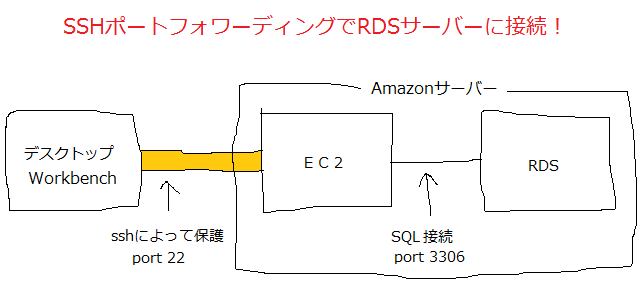

Example Configurations Scenario 1Ĭreate a tunnel from your local machine to access a MySQL database running on an EC2 instance using the SSM host as a bastion host. In the preceding example, 127.0.0.1 and localport translate to access targethost:destport. To test access to the tunnel on the target port created in step 1, run the following command: telnet 127.0.0.1 localport To start the SSH tunnel, run the following command: ssh -i /path/my-key-pair.pem -L localport:targethost:destportĢ. Note: If you receive errors when running AWS CLI commands, make sure that you’re using the most recent version of the AWS CLI.ġ. To start the SSH tunnel using Session Manager, follow these steps: AWS CLI v1.16.12 or newer on your local machine. Session Manager Plugin v1.1.23 or newer on your local machine.ģ. Note: You must have the following installed to use the SSH feature:Ģ.
#Aws rds ssh tunnel install#
Install the Session Manager plugin for the AWS Command Line Interface (AWS CLI)Īllow SSH connections through Session Manager and make sure that SSH connection requirements are met. PrerequisitesĬomplete the Session Manager prerequisites Note: For instructions to access your EC2 instances with a terminal or a single port forwarding using Systems Manager, see Setting up Session Manager. Ease of use: You can access resources in your private VPC directly from your local machine.Therefore, there's no need to open any inbound rule publicly. The local resource must allow inbound traffic only from the instance acting as bastion host. This allows you to use Session Manager without any inbound connections.

Increased Security: This configuration uses only one Amazon Elastic Compute Cloud (Amazon EC2) instance (the bastion host), and connects outbound port 443 to Systems Manager infrastructure.A managed instance that you create acts as a bastion host, or gateway, to your AWS resources. Session Manager tunnels real SSH connections, allowing you to tunnel to another resource within your virtual private cloud (VPC) directly from your local machine. Session Manager uses the Systems Manager infrastructure to create an SSH-like session with an instance. For more information about remote host port forwarding, see Start a session. Port forwarding is an alternative to the steps below. This feature is supported on SSM Agent versions. To create an SSH tunnel, you can use Session Manager, a capability of AWS Systems Manager that lets you use port forwarding for remote hosts.


 0 kommentar(er)
0 kommentar(er)
